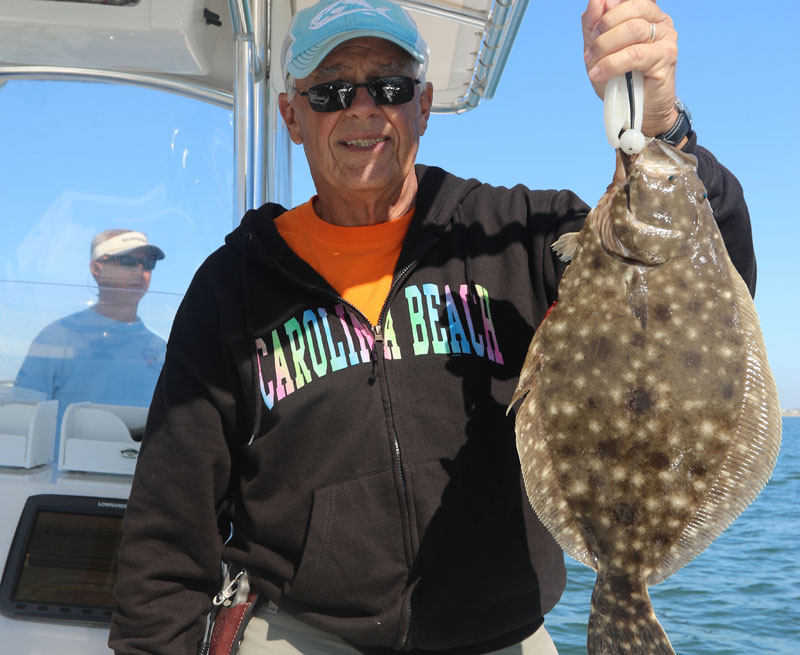
In 2020, North Carolina took the drastic step of shutting down the recreational flounder fishery for southern flounder for more than 10 months. A 6-week season from mid-August through September was the only respite for flounder lovers.
In South Carolina, all seemed normal, with relatively liberal limits on the flatfish and no mention of a closed season.
But things are all about to change. In both states.
The N.C. Division of Marine Fisheries recently released the 2021 season dates for southern flounder: Aug. 16-Sept. 30. Anglers will have a 4-fish daily creel limit with a 15-inch size minimum. However, these numbers aren’t set in stone.
Amendment 3 of the Southern Flounder Fishery Management Plan is expected to be finalized before August, and it could call for anything from a total shutdown to a 1-fish limit to a slot limit. It could create new regulations that we’ve never even thought about. So while many recreational anglers are looking forward to Aug. 16, it may be all for naught. Or at least all for little.
One point of contention brought up by Coastal Conservation Association-NC is the commercial/recreational split of the harvest being set at 70/30. Recreational anglers bring more money to the table for local economies and are responsible for far lower catches of flounder. By its statistics, CCA said that based on the number of recreational fishermen who target flounder, they might still exceed the harvest quota. That’s because only 30% of the harvest is allocated to the recreational sector.
Payback is, well…
What could make that so much worse is that if the recreational sector exceeds its allotment, it would create a “payback” scenario, where the recreational harvest is shut down for an extended period of time in 2022 until anglers essentially “pay back” for the amount of quota that was exceeded. That could cause a total closure of the flounder fishery for a year or more. And remember, that’s if this year’s daily limit was just one fish instead of four, which it’s currently slated to be.
South Carolina has been late to the party when it comes to implementing measures to limit flounder harvests, even though the state recognizes the species is in serious trouble.
That’s not because the S.C. Department of Natural Resources doesn’t care, but in South Carolina, it literally takes an act of congress to change fishing regulations. Fisheries managers can only make suggestions to the state’s lawmakers, who must go through all the steps to making or changing laws.
SCDNR has been hard at work, holding meetings and getting questionnaires to the public, asking for input on every aspect of flounder fishing habits and recommendations. At least two different bills have been introduced by lawmakers.
Right now, South Carolina anglers can keep 10 flounder a day, year-round, with a minimum size of 15 inches. One proposed change includes lowering the daily limit to four fish. A slot limit is another, and a closed season, much like North Carolina’s, is a third option. Increasing the minimum size to 16 inches is another, but this is one of the more controversial changes among fisheries biologists.
Big girls, not bad girls
Female flounder grow bigger than males, so harvesting only larger fish means you’re harvesting mostly females. Since only females can have offspring, it seems counterproductive to remove only those fish who can help repopulate a species that is dwindling in numbers.
Even instituting a slot limit — say from 14 to 17 inches — puts most of the pressure on females.
Another point of contention among anglers is that it’s only the southern flounder — which mostly lives inside sounds, bays and rivers where the water salinity is markedly lower than in the ocean — that’s been marked as being in trouble. The Carolinas are home to two other sub-species of flounder: summer and Gulf, which live in waters with higher salinity, like the ocean. The summer and Gulf flounder populations are healthy, but both states regulate all flounder as one species.
One reason — maybe the only one — is that it’s difficult, especially for casual anglers, to identify one sub-species of flounder from another. However, it probably wouldn’t be difficult if anglers had a reason to learn the difference.
No one wants to see an entire species of fish wiped out, and most recreational anglers agree that some changes need to be made. We don’t know what those changes are yet, but one thing’s for sure — changes are coming.




Be the first to comment